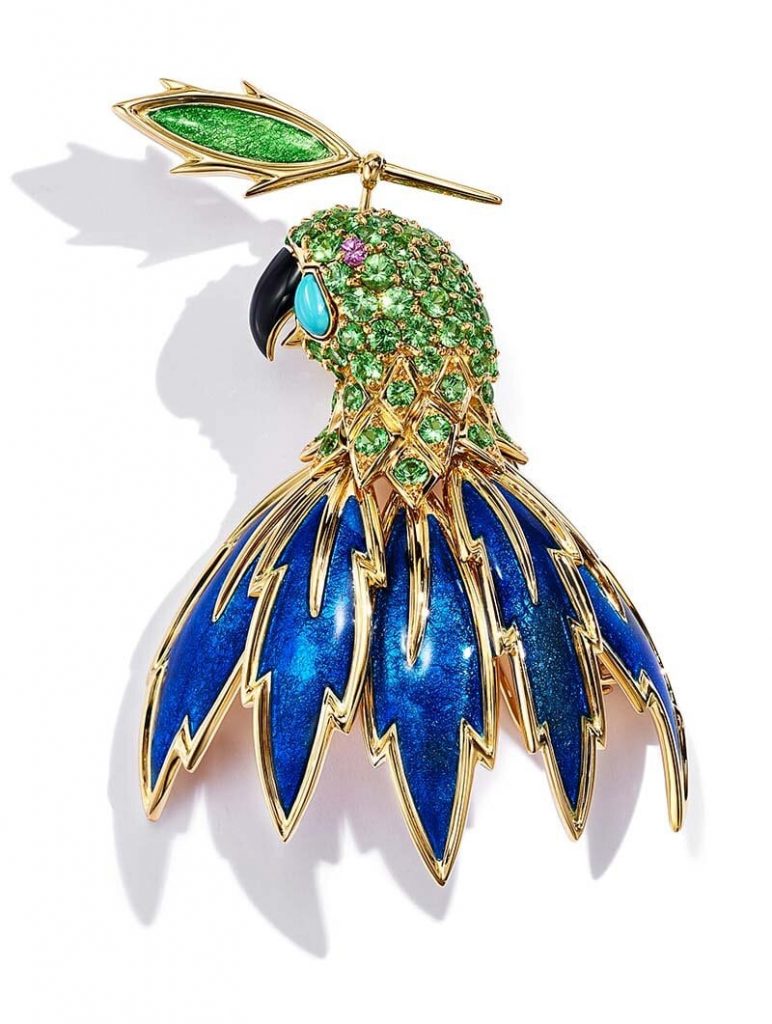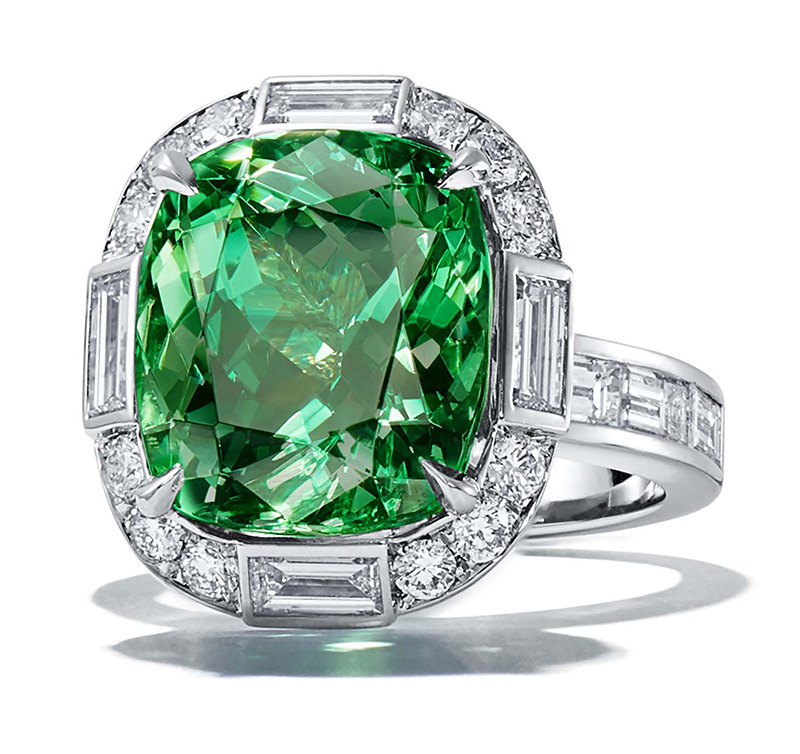Named after the Tsavo national park in Kenya by the geologist who discovered the gem, tsavorite has emerged from the shadows of emerald to claim its rightful place among the galaxy of precious stones. Our international correspondent, Richa Goyal Sikri unravels the story of the grossular green garnet.
Tsavorite was discovered in 1961 when a curious second-generation geologist decided to go exploring one weekend in Southern Rhodesia (Zimbabwe). His name: Campbell Bridges.
Bridges’ curiosity brought him face to face with a Cape Buffalo who decided to express his irritation by charging him. “My father knew how dangerous these bovine warriors could be…and managed to jump into a steep ravine in the nick of time.” recalls his son Bruce. “He continued coursing up the ravine, making his way to the top of the hill. [There], he caught a glint of green in the sunlight. On further investigation, he realised the flash of colour was mineral in nature and had the crystal makeup of garnet, but [was] unlike anything he had ever seen.”
Before Bridges could do much about his discovery, the Atomic Energy Authority transferred him out of Rhodesia. Six years later (1967), his continuous prospecting and geological knowledge brought him to a range of hills outside the village of Komolo in Tanzania, similar to the ones he had seen earlier. Once again, the green garnets caught his eye, and he was able to develop that deposit, bringing this 550 million-year-old gemstone to the world.

In 1970, the Tanzanian government nationalised the mines, motivating Campbell Bridges to use old colonial maps to rediscover tsavorite (later that year) across the border in Kenya!
Although tsavorite is coloured by the same elements as an emerald (vanadium & chromium), its light dispersion capabilities are double of an emerald.
Tsavorite specialist Joe Belmont, co-founder KV Gems, explains, “Technicalities aside, these characteristics mean that when properly faceted, tsavorite sparkles with an electric energy [as opposed to] the sleepier glow of an emerald. Its distinctive character. Tsavorite is also singly refractive of light being part of the cubic crystal system (like a diamond).”
To sum up, tsavorite beautifully combines the rich green colour of an emerald with the dazzling sparkle of a diamond.

Gem quality tsavorite worthy of a connoisseur’s attention have mainly been found in East Africa. Tsavorite miner and African gem specialist Bruce Bridges explains, “While samples of tsavorite have been found in other locations, till now, the gem-rich geological region across Kenya and Tanzania is responsible for commercially important, fine-quality tsavorite.”
Elaborating on the gem’s distinguishing features based on origin, Bruce explains, “There are trends within regions. The small quantities found in Madagascar tend to have tsavorite with higher Vanadium content rendering darker gems, which work mainly for calibrated small sizes”. Regarding larger sizes in more exceptional qualities, Bruce elucidates, “In my opinion, Kenya produces tsavorite in good qualities up to about 30 carats, Komolo (Lemshuko) in Tanzania has produced stones up to around 50 carats in fine qualities. The larger stones (above 50 carats) have come from Merelani (now more widely called Mererani) in Tanzania. In my collection, I have the largest fine square-cushion cut tsavorite on record, known as the Lion of Merelani, which is 116.76 carats.”
The rarity of tsavorite emanates from the unique geological events that birthed this incredible gem. Kenya-based independent geologist Cedric Simonet explains, “Pockets of tsavorite are the result of the transformation of small masses of mineral salts that originally formed in dried up lakes on the surface of the earth. When mining underground, predicting the next tsavorite pocket is akin to figuring out the location of the patch of salt in a surface environment 700 or 800 million years ago, an almost impossible challenge.”
If both Tanzania & Kenya share similar geology, then why has Tanzania yielded larger tsavorite? Tsavorite miner & African gem specialist Bruce Bridges shares his views, “The rock formations in Merelani have larger shadow-zones where slightly lower pressures and temperatures allow the chemically-rich hydrothermal solution to form larger, cleaner crystals. In other locations, the higher temperature, pressure and smaller cavities tend to lead to smaller and more fractured material.”
Campbell Bridges understood that for a gem to become collectable, beauty, durability and rarity were not enough; professional storytelling techniques needed to trigger a desire for acquisition plus consumer confidence via the endorsement of a recognised brand. In 1967, Bridges introduced tsavorite to Henry B. Platt from Tiffany & Co. The company became the first jewellery brand to launch tsavorite in their collections, enabling Bridges to develop formal mining operations in Kenya.

